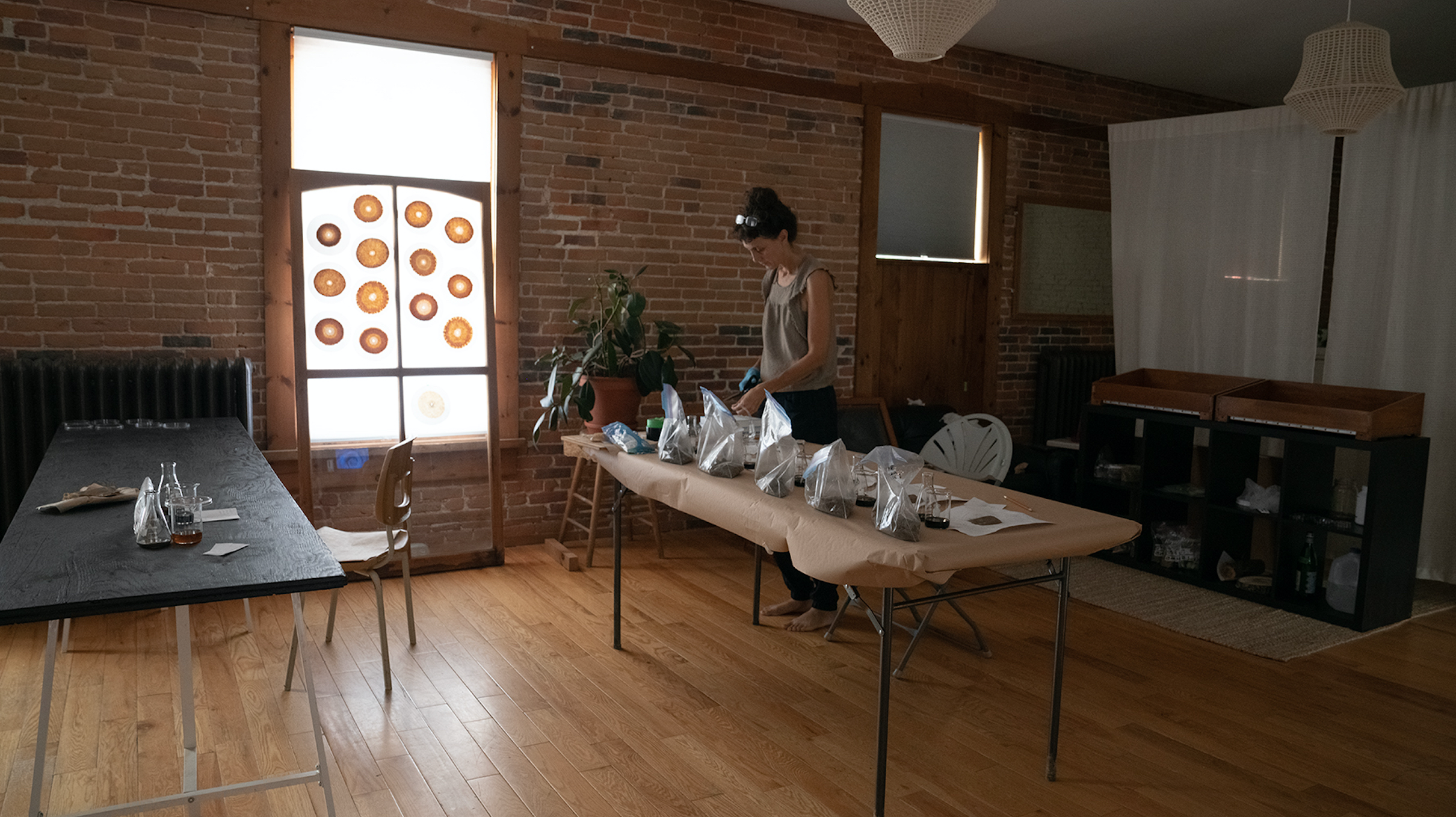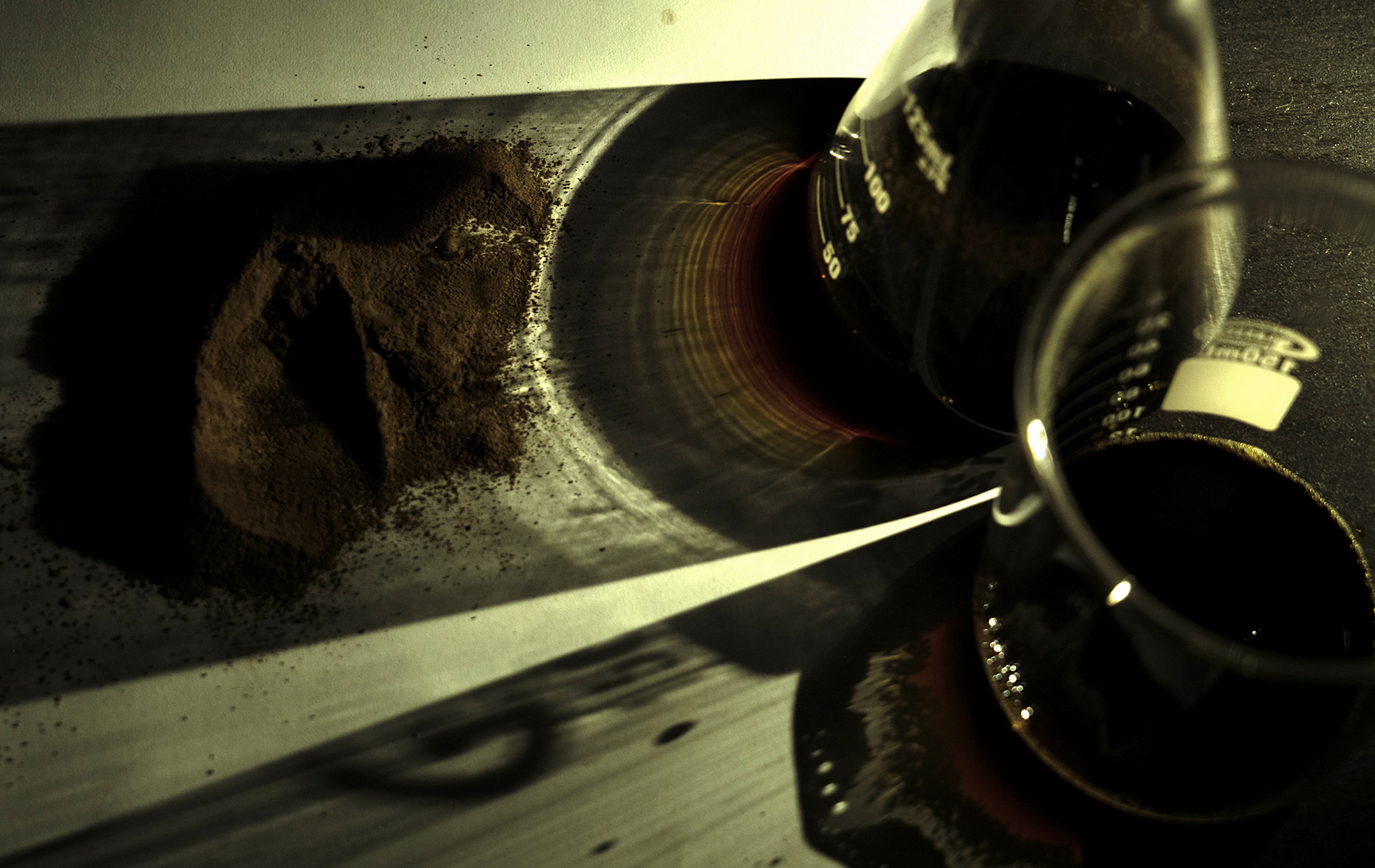

Obra en proceso Espejos del Holobionte es una investigación artística que indaga en la huella de posibles relaciones tangibles y…
Obra en proceso
Espejos del Holobionte es una investigación artística que indaga en la huella de posibles relaciones tangibles y simbólicas, entre la salud humana y la salud del suelo de la Tierra.
Se basa en el estudio y la práctica de dos métodos de estudio abiertos utilizados para apoyar el diagnóstico del estado de salud de dos cuerpos vivos diversos pero interrelacionados: la iridología para la observación del iris humano y la cromatografía para el análisis de la vitalidad del suelo. Buscando observarnos a nosotros mismos en el espejo de la tierra y reflejar el suelo en nuestros ojos, a través de una diversidad de historias de vida y perspectivas de agricultores y personas que cultivan alimentos y plantas medicinales.
Este proyecto de largo plazo propone una reflexión sobre el impacto de la agroindustria y las biotecnologías de patente en contraste con el conocimiento, herramientas, tecnologías o metodologías libres. Sobre autonomía y dependencia; Complejidad, diversidad, resistencia. Y sobre todo, la variedad de escenarios y niveles de complejidad y adversidad en la relación humana con la naturaleza a través de la agricultura y la alimentación.
Me inspiro en la figura del holobionte, que hace referencia a aquellos organismos -animales o vegetales considerados como un ecosistema con todos sus microorganismos asociados -el microbioma-. Con el fin de identificarlos como una unidad, cada tierra y los seres humanos que la trabajan, utilizamos el concepto del nicho ecológico, ese ámbito relacional en el que el ser vivo vive y se mueve con él. (Maturana H. 2017)
La cromatografía y la iridología también son tecnologías análogas que integran la mirada subjetiva y la intuición. Ambos son lenguajes de signos que constituyen una revelación del presente como consecuencia del pasado. Un croma es un fotograma de un instante en la vida del suelo. Poder captarlo nos permite no sólo estudiar su situación actual sino también inferir las causas de ese estado y por tanto las posibles respuestas que más allá del cuerpo físico, conciernen al espíritu.
Work in progress
Mirrors of the Holobiont is an artistic research that investigates the trace of possible tangible and symbolic relationships, between human health, and the health of the Earth’s soil.
It is based on the study and practice of two open study methods used to support the diagnosis of the state of health of two diverse, but interrelated living bodies: Iridology for the observation of human iris and chromatography for the analysis of vitality of soil. Seeking to observe ourselves in the mirror of the earth and to mirror the soil in our eyes, through a diversity of life stories and perspectives of farmers and people growing food and medicinal plants.
This long term project proposes a reflection about the impact of agroindustry and patent biotechnologies in contrast with free knowledge, tools, technologies or methodologies. About autonomy and dependence; complexity, diversity, resistance. And above all, the variety of scenarios and levels of complexity and adversity in human relation with nature through agriculture and nourishment.
I am inspired by the figure of the holobiont, which refers to those organisms -animal or plant considered as an ecosystem with all its associated microorganisms -the microbiome-. With the purpose of identifying them as a unit, each land and the human beings who work it, we use the concept of the ecological niche, that relational area in which the living being lives and moves with it. (Maturana H. 2017)
Chromatography and iridology are also analogous technologies that integrate subjective gaze and intuition. Both are languages of signs that constitute a revelation of the present as a consequence of the past. A chroma is a frame of an instant in the soil´s life. Being able to catch it allows us not only to study its current situation but also to infer the causes of that state and therefore the possible responses that beyond the physical body, concern to the spirit.
Colaboraciones:
Gabriela González – Earthquitectura (cromatografía de suelos)
Marta Sosa / iridología y medicina natural
Agradecimientos:
Gilberto Esparza
Ale Mendoza
Remigio Valdez de Hoyos
Vincent Deronde
Pierre Laurin
Pierre of the forest
Paulette Vanier
Gauthier Melin
Isabelle Herbert
Jonathan Reid Sévigny
Martin Morissette
Pascale Herbert
Insituto Cultural de México en Montreal
Espacio Adelard, Frelighsburg, Canada


